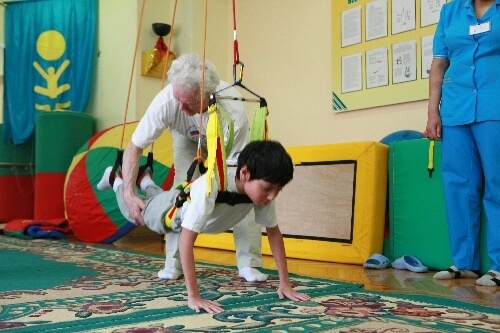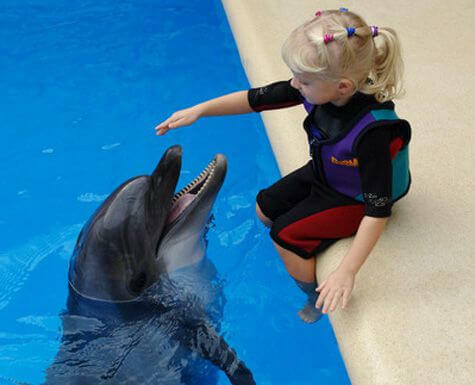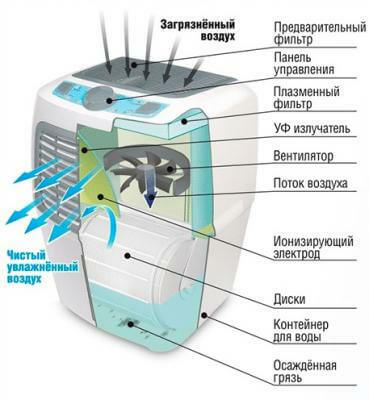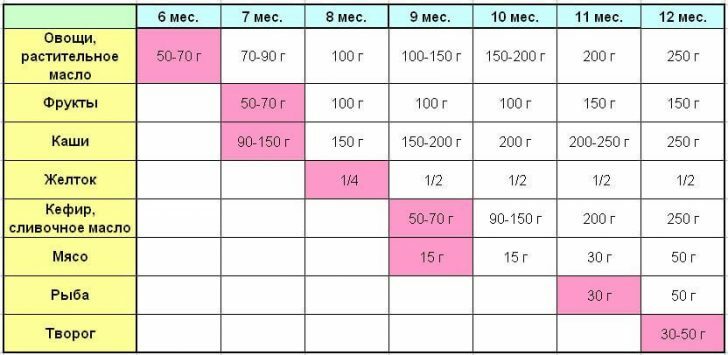Cerebral palsy in children, treatment
 Children's cerebral palsy( cerebral palsy) is a disease that includes a group of symptomatic complexes of motor disorders. Motor disorders are secondary and they appeared against the background of brain abnormalities that occurred in the perinatal period( in the womb)
Children's cerebral palsy( cerebral palsy) is a disease that includes a group of symptomatic complexes of motor disorders. Motor disorders are secondary and they appeared against the background of brain abnormalities that occurred in the perinatal period( in the womb)
Why are babies born with cerebral palsy in our progressive time? This fact confuses both medical workers and parents of babies. Why do we need cerebral palsy? The parents are asking themselves a question. It is important to know that this disease is not hereditary.
Causes of cerebral palsy
Causes of cerebral palsy in children is pathology in the cortex, as well as in the subcortical areas and brainstem. This can lead to rubella virus, as well as herpes, low or high blood pressure. Postpartum trauma of the newborn( head injuries) and hypoxia often leads to this disease
History of cerebral palsy
The first who published his work on this issue is surgeon John Little. He believed that generic asphyxia is the cause of the development of spasticity( a state of increased muscle tone) and plethy( complete absence of arbitrary movements in the legs).Little was the first in the history of cerebral palsy to describe diplegia( paralysis that affects the whole body, but more of a leg than hands).And for a long time the cause of cerebral palsy in children was considered to be suffocation during childbirth, until Freud refuted this version. He noted that not all children affected by hypoxia had cerebral palsy and had mental disabilities. Freud introduced the term "infantile cerebral palsy" and suggested that the disease is associated with the development of the brain in prenatal development. And it was he who introduced the first classification of cerebral palsy in children. And this hemiplegia and cerebral diplegia. Cerebral diplegia or bilateral cerebral palsy, in turn, was subdivided into generalized rigidity( Little's disease), paraplegic rigidity, double athetosis, generalized chorea and bilateral hemiplegia. Using this classification, all the following diseases were compiled. At the moment, paraplegic rigidity to cerebral palsy in children is not reckoned. Disease of cerebral palsy is often confused with childhood paralysis. These are different diseases. The latter is caused by epidemic poliomyelitis
Symptoms of cerebral palsy
In the first three years of life, signs and symptoms of the disease appear. The child has difficulty keeping his head, he stoops while sitting, lying down takes an uncomfortable position, crawls in an unusual way, has difficulty in swallowing food, can not keep his balance. Patients have a delay in physical development, fine motor skills, and difficulties with
. Symptoms of cerebral palsy
Patients with cerebral palsy have pathological muscle tone( muscle tension and weakness), various motor disorders, marked lack of coordination of movements, problems of different origin with hearing and vision( strabismus, aAlso rolling up eyeballs), pains of a different nature in the back, as well as convulsions and contractures of
joints. The following forms of cerebral palsy are distinguished: spastic, athetoid or dyskinetic, ataxic, hypotensive
The spastic form is found in most cases of the disease and is marked by increased muscle tone, as well as a reduction in the number of joint movements and a decrease in sensitivity in the lesions. With spastic hemiplegia, one side of the body turns off and the lower limbs are affected. And with spastic tetraplegia, two arms and legs are affected, and mental retardation is also connected. It is very difficult for a child to walk and use his hands and voice, as a result of which the posture is distorted and the
basin is bent. The athetoid( dyskinetic form) is marked by motor impairment, as well as hyperexcitability of the nervous system. The sick child performs random and uncontrollable repetitive movements. The child is difficult to walk, and also sit in one pose, it is difficult to talk and control his facial muscles, which provokes drooling
The ataxic form has vestibular disturbances. The child has difficulty while maintaining balance and there are disturbances from the perception of the world around him. There are involuntary movements - shivers, which are characterized by intensification at the time of approaching the target. Children with this form suffer from stuttering, but their intellect is not affected by
. The hypotonic form is characterized by lethargy, as well as muscle weakness, difficulty in holding the head. The sick child has some problems with breathing, as well as swallowing and speech
Cerebral palsy treatment
Life with cerebral palsy is an everyday job in overcoming the difficulties associated with the disease. Effective and effective ways of treating this disease do not exist. The pathology in the brain does not progress, but it can not be rehabilitated. The developed intellect, as well as the clear consciousness of the patient, will forever remain in the body stiffened by the disease. And to make the body dexterous, flexible and obedient, rehabilitation is necessary.
Rehabilitation of cerebral palsy in children includes the help of different specialists. And these are masseurs, instructors of therapeutic physical training, orthopedists, speech therapists and psychologists. Restorative treatment includes exercises with imperative-corrective gymnastics( strengthening of internal muscles).And development programs strengthen the motor and speech functions of the child, adapt it to an independent life in society. 
One of the successful methods in treatment is dolphin therapy. The results from such a restorative treatment are pleasing to doctors and parents. Treatment is under the supervision of specialists. Dolphins immediately establish interaction with sick children and stimulate the development of visual and tactile analyzers. It is established that touching the dolphin, the child is stimulated by the reflex zones responsible for the nervous system. The dolphin, working with its fin, creates a whirlpool effect, and water trains the muscles, reducing the load from the joints. The atmosphere of dolphin therapy makes it possible to live fully and joyfully, forgetting about the diagnosis of cerebral palsy.
More articles on the topic:
1. Down Syndrome 2. Hydrocephalus



